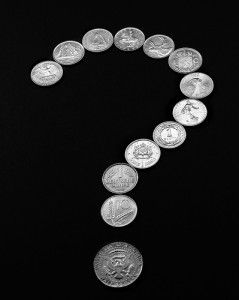Could I offer my product at 5 times the cost? FedEx Did!
Killer Question #17: Could I offer my product at 5 times the cost if it had greater feature/function?

In 1971, Frederick W. Smith raised $91 million in venture capital. After adding $4 million of inherited money to his funding, Smith purchased a used aircraft company in Little Rock, Arkansas. He began using the aircraft to provide overnight delivery services for envelopes and small packages being shipped within the United States. Smith eventually named his business-Federal Express (FedEx). The firm began marketing itself as “a freight service company with 550-mile-per-hour delivery trucks.” When Smith found himself struggling to pay expenses, including payroll, he approached General Dynamics for a loan. After his funding request was rejected, Smith flew to Las Vegas, Nevada, where he won $27,000 at the black jack tables.
Smith's tenacity paid off in 1976, when the firm achieved profitability for the first time. FedEx launched a direct mail advertising campaign to boost its visibility. In 1979, FedEx began using a centralized computer system known as COSMOS to track packages, routes, weather, vehicles, and employees. Soon thereafter, a digitally assisted dispatch system (DADS) was put in place to allow clients to electronically request pickups.
FedEx launched its first major television advertising campaign in 1981, with the tag line, “Federal Express: When it absolutely positively has to be there overnight.” That year, the firm also launched its FedEx Overnight Letter and began international service to Canada. By then, Federal Express had become the leading airfreight services provider in the United States with sales reaching $1 billion in 1983.
All of this by providing a service that cost +20 times more than the competition (Fedex letter versus a First Class letter from the USPS). How? by delivering a service (overnight) and then innovating (online tracking). Back in the early days of FedEx, many people didn't realize they needed overnight letter and package delivery. Once they say the value of know where and when a package would be delivered, they gladly paid the premium. Compared to normal practice of the day of using the US Postal Service (2 to 5 days and no way to know where the letter is at), FedEx gave back control of important documents and packages to the customer. Less stress and less time.
How valuable is that to you and your customers?
Killer Question #17: Could I offer my product at 5 times the cost if it had greater feature/function?
Phil McKinney Newsletter
Join the newsletter to receive the latest updates in your inbox.




